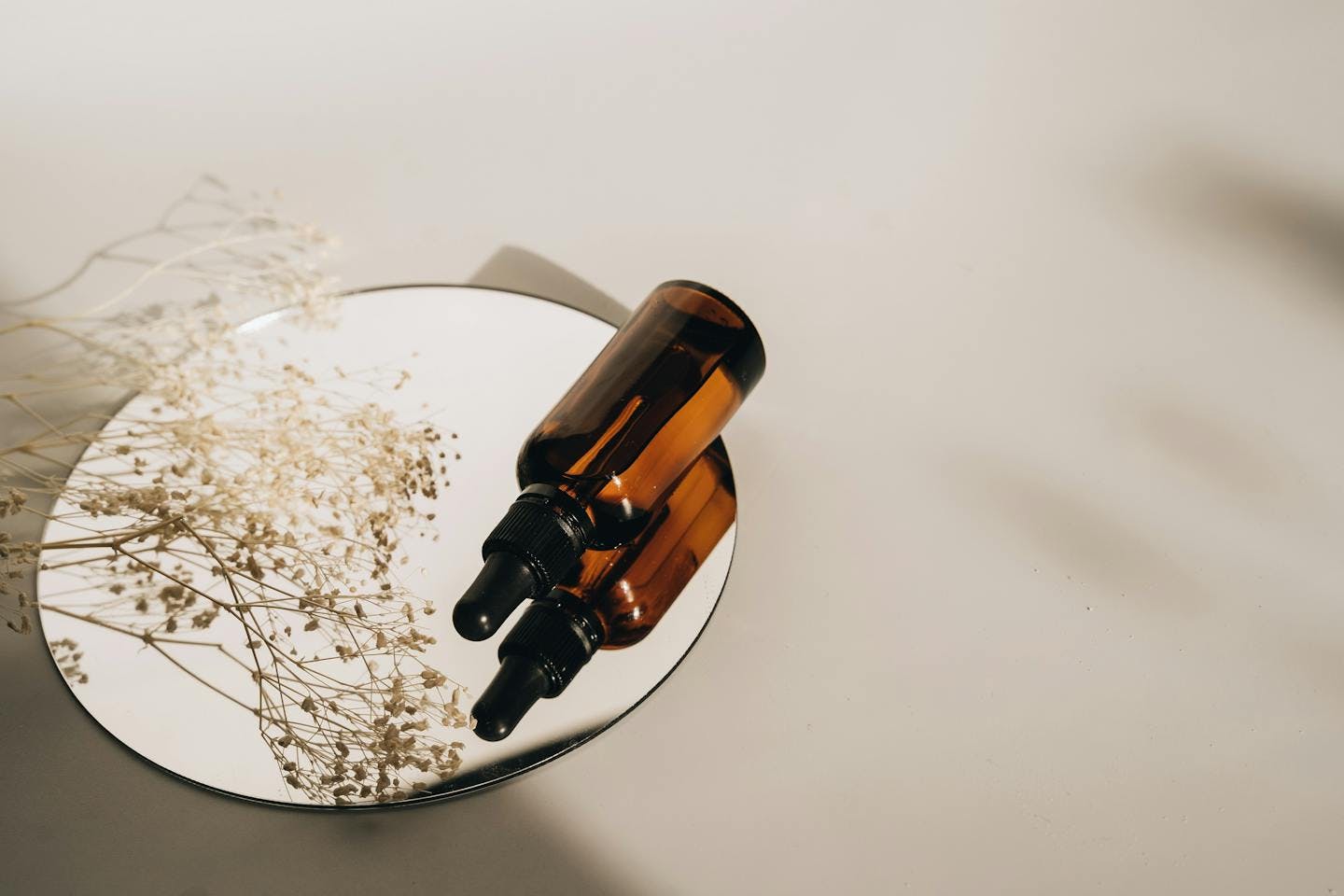1 March 2022
Everything you need to know about Glycolic Acid!

Benefits
- Exfoliates the skin gently: Physical exfoliation can remove dead skin cells and smoothen the skin too, but chemical exfoliators, like glycolic acid, do the same job without any harsh scrubbing.
- Brightens complexion: Dull-looking skin is often a result of dead skin cell build-up. Glycolic acid helps remove those dead cells, leaving your skin looking fresh and glowing.
- Maintains an even skin tone: Removing dead skin cells also helps remove hyperpigmentation and dark spots. Consistent use will help promote a more even complexion.
- Helps keep acne at bay: Glycolic acid helps remove the build up that may result in acne and blemishes. Consistent but gentle use helps prevent acne by keeping the surface of the skin renewed.
- Reduces the appearance of fine lines: When skin starts to mature as we reach our golden years, the cell turnover rate slows, resulting in more dead skin cell accumulation on the surface of our skin. Proper use of glycolic acid can remove those dead skin cells, therefore minimising the appearance of fine lines and wrinkles.
- Promotes collagen development: Research shows that when glycolic acid penetrates the skin, it works to promote the production of collagen, improving your skin elasticity and its overall appearance.
Multiformat:
Glycolic acid can be used in a variety of formats, but it should be used as a leave-on for maximum impact. You can find glycolic acid in:
- Toners
- Tonics
- Serums
- Masks
- Moisturisers
- Cleansers
Glycolic acid can also be found in some super powerful, high-impact chemical peels. These peels should ALWAYS be administered by licensed professionals, like an esthetician or dermatologist. Be sure to talk to your provider about whether it is suitable for your skin before following through with this type of treatment.
Compatible with you:
Glycolic acid is safe for most skin, but be sure to use a lower concentration or a gentler product when starting. If you have sensitive skin, we recommend starting off with a rinse-off glycolic acid product (like a cleanser) or a low concentration toner 2-3 times a week.
Your skin can build up a tolerance for AHA’s like glycolic acid, so start small and work your way up when you start to notice a downward trend in results.
Is it for your skin type?
As we mentioned above, people with most types of skin can use glycolic acid, but the method, concentration, and frequency of use is dependent on your skin sensitivity. People with more sensitive skin should start with a rinse-of product or a very low concentration leave-on product. If you have rosacea, eczema, super sensitive skin, or have recently had a cosmetic treatment or procedure, alpha-hydroxy acids may not be the best product for you right now. Talk to your provider to see if glycolic acid is the right active ingredient for your skin at this time.
We always recommend patch testing whenever you try a new product.
How does it work? A little bit of science…
Glycolic acid’s full “mechanism of action” has not been fully described yet, but there are some validated theories. The outermost layer of your skin is called the stratum corneum. The layer of skin, sometimes called the horny layer, is composed of 15-20 layers of dead skin cells. These layers of cells serve to protect your skin from the environment. A 1997 publication by M. Fartasch et al. describes how glycolic acid breaks up the cohesion between these dead skin cells, causing desquamation - the shedding of skin cells. Your body sheds these cells naturally every 14 days or so, but AHAs like glycolic acid speed up this process and leave you with fresher, brighter skin.
Glycolic acid has the smallest molecular weight out of all the AHA’s, allowing it to penetrate the skin more easily and get to work. This small molecular size allows it to go one step further than other AHAs and stimulate fibroblasts causing the production of more collagen.
How to find it on beauty labels
- Glycolic Acid
- Alphahydroxyacetic acid
- Hydroacetic acid
- AHA (General term for this type of acid, may need to check which acid is specified)
What products Glycolic Acid can be found in:
Here you can find a selection of products with this ingredient at The Birchbox Shop.
How to incorporate it into your routine:
- Start slow: If you haven’t tried glycolic acid before, try a face wash that lists glycolic acid as an active ingredient. Some light stinging or burning and redness is normal while your skin becomes accustomed to the product.
- Work your way up: Once you feel like your skin is accustomed to glycolic acid and isn’t too irritated by it, try switching to a low concentration leave-on (like a toner or serum). Use that 2-3 times a week, and increase the frequency if your skin is responding well.
- Night time is the best time: It’s best to use glycolic acid at night after you’ve washed your face since AHA’s can increase your sensitivity to the sun. You can use it during the day, but be sure to follow up with some sun protection.
- Moisturise: You can follow up with a gentle moisturiser or serum after your glycolic acid product is either completely washed off or fully absorbed.
Works well with…
- Suncream! Wearing sunscreen when using glycolic acid products is highly recommended since using AHAs can increase sun sensitivity.
- Moisturiser: Glycolic acid can sometimes leave your skin feeling a little dry and irritated. It is best to follow up with a moisturiser after using your glycolic acid product to protect and hydrate your newly exfoliated skin.